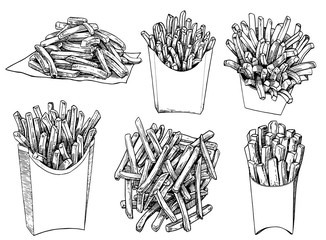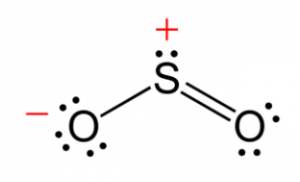“It must be the sulfites“
Why Sulfites?
Let’s start with why sulfites are in the wine: The Sulfur Dioxide (SO2) is intended to serve as an anti-oxidant and protect the wine from microbial growth. The absence of oxidation works to preserve wine’s pure aroma and flavor characteristics. Who doesn’t want that ?
By the way, if you recall from your high school Chemistry class, SO2 can give off a “rotten egg” odor. Yet, low levels of SO2 in wine can actually impart aromas of tropical fruits.
Only 1% Are Truly Allergic to Sulfites
SO2 is safe for consumption by almost everyone except the 1% of those who are actually allergic to it. A dry red wine has 25-75 parts per million (ppm) of SO2. Just so you know, canned foods have 300-1,000 ppm, while French fries have 2,000 ppm. For dry red wines, that means that canned foods have 4x – 13.3x more SO2 by percent, while French fries have 25x more by percent.

Ever had a headache from French fries?
Also, it’s very likely that if you’re buying a bottle with some years on it, the sulfites will have dissolved and be completely gone.

You Can’t Make Wine Without Producing Sulfites
SO2 is a natural by-product of making wine. If you see a wine advertised as “sulfite free,” it just means that no sulfites were added. If you want juice from grapes that is truly sulfite free, look for grape juice on your grocery shelves.

How To Avoid Those Red Wine Headaches
Finally, most headaches from drinking wine are a result of drinking too much wine and thereby getting dehydrated. Best approach: drink in moderation. Second best approach: One glass of water after every glass of wine.


Sláinte,

Footnote:
This from Food Science Magazine: “Researchers believe they have hit on the reason why wine – red wine in particular – causes such swift and undeserved headaches. When the liver breaks down a particular ingredient, in this case, a flavonol called quercetin, it is processed in the body into various substances. One of these, quercetin glucuronide, turns out to be particularly effective at blocking the enzyme that converts acetaldehyde into acetate. With this crucial enzyme is suppressed, toxic acetaldehyde builds up in the bloodstream, the scientists believe. At high levels, this causes headaches, nausea, facial flushing, and sweating. This could be the key to solving the mystery. The next step is to test it scientifically on people who developed these headaches.”
In the meantime, moderation and lots of hydrating.
-Jim
